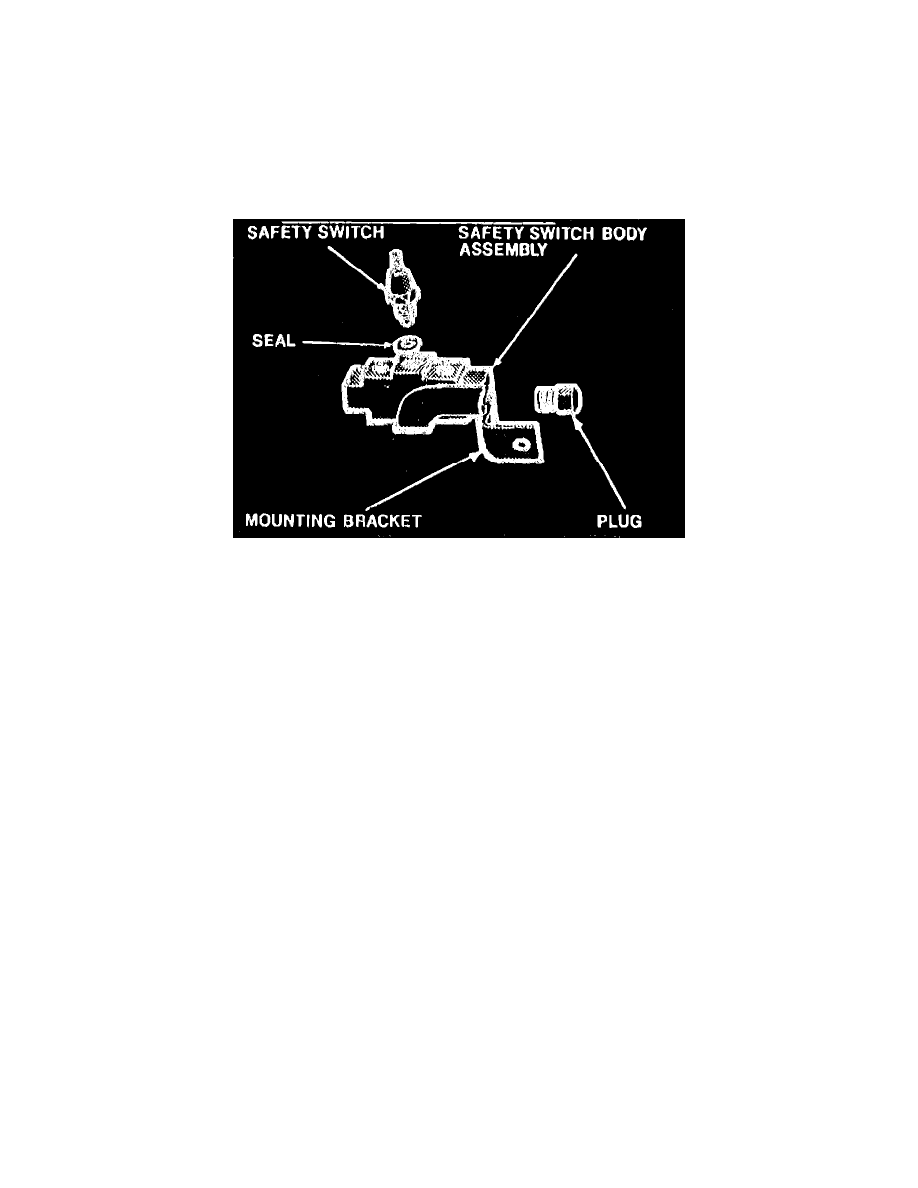Tempo L4-140 2.3L HSC (1986)

As shown in Fig. 4, movement of the differential valve forces the switch plunger upward over the tapered shoulder of the valve to close the switch
contacts and light the dual brake warning lamp, signaling a brake system failure.
In Fig. 5, the valve assembly consists of two valves in a common bore that are spring loaded toward the centered position. The spring-loaded switch
contact plunger rests on top of the valves in the centered position (right view). When a pressure differential occurs between the front and rear brake
systems, the valves will shuttle toward the side with the low pressure. The spring-loaded switch plunger is triggered and the ground circuit for the
warning light is completed, lighting the lamp (left view).
In Fig. 6, as pressure falls in one system, the other system's normal pressure forces the piston to the inoperative side, contacting the switch terminal,
causing the warning light on the instrument panel to glow.
On front wheel drive models, a fluid level indicator replaces the pressure differential valve used in previous brake systems. It is contained inside the
body of the master cylinder plastic reservoir and activates the brake warning light when fluid level is low.
Fig. 7 Typical pressure valve and brake warning light switch
Testing Warning Light System
If the parking brake light is connected into the service brake warning light system, the brake warning light will flash only when the parking brake is
applied with the ignition turned ON. The same light will also glow should one of the two service brake systems fail when the brake pedal is applied.
To test the system, turn the ignition on and apply the parking brake. If the lamp fails to light, inspect for a burned out bulb, disconnected socket, a
broken or disconnected wire at the switch.
Fig. 7 is an exterior view of one of these switches. They are usually mounted on the left frame side rail or on the brake pedal bracket.
To test the brake warning system, raise the car and open a wheel bleeder valve while a helper depresses the brake pedal and observes the warning light
on the instrument panel. If the bulb fails to light, inspect for a burned out bulb, disconnected socket, or a broken or disconnected wire at the switch. If the
bulb is not burned out, and the wire continuity is proven, replace the brake warning switch.
